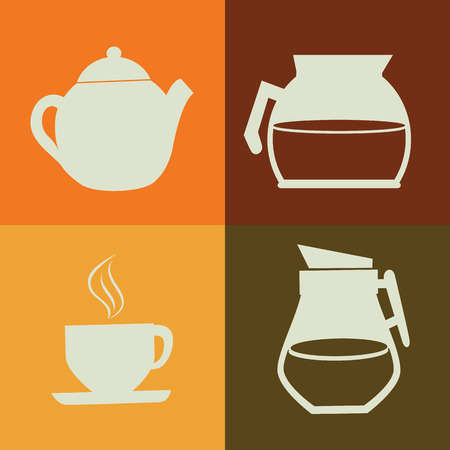1. Understanding the Basics: Blade vs. Burr Grinders
If youre diving into the world of home coffee brewing, one of the first things youll need to understand is the type of grinder that best suits your needs. Choosing between a blade and a burr grinder might seem simple, but this decision can seriously impact the taste and consistency of your coffee.
What’s the Difference?
The key difference between blade and burr grinders lies in how they grind coffee beans. Each method affects the flavor, texture, and overall quality of your brew.
| Feature | Blade Grinder | Burr Grinder |
|---|---|---|
| Grinding Mechanism | Uses a spinning blade (like a blender) | Uses two burrs (flat or conical) to crush beans |
| Grind Consistency | Inconsistent – some fine, some coarse particles | Consistent – uniform particle size |
| Flavor Quality | Can lead to uneven extraction and bitter flavors | Better extraction, more balanced and flavorful cup |
| Price Range | $15–$30 (budget-friendly) | $40–$300+ (varies by type and quality) |
| Best For | Casual drinkers, quick cups | Coffee enthusiasts, specialty brewing methods |
How They Work
Blade Grinders
Blade grinders chop up coffee beans using a fast-spinning metal blade. The longer you run it, the finer the grind gets—but its hard to control consistency. Some grounds end up powdery while others stay chunky, which can mess with how evenly your coffee brews.
Burr Grinders
Burr grinders crush beans between two abrasive surfaces (burrs), allowing for a much more uniform grind size. You can adjust the distance between the burrs to dial in specific grind settings for espresso, pour-over, French press, and more. This precision helps extract better flavor from your beans.
Why Coffee Lovers Prefer Burr Grinders
If youre serious about getting the most flavor out of your coffee, a burr grinder is usually the way to go. The consistent grind size means your water extracts just the right amount from each particle, leading to a smoother, richer cup every time. While they cost more upfront, many see them as an essential investment in better coffee at home.
Pro Tip:
If youre using specialty brewing methods like espresso or pour-over, a burr grinder can make all the difference. Even small changes in grind size can impact taste!
2. Choosing the Right Grinder for Your Coffee Style
Picking the right coffee grinder isnt just about looks or price — its about matching the grinder to your favorite way of brewing coffee. Whether you’re an espresso aficionado or a weekend French press fan, your grind size can make or break your cup.
Why Grind Size Matters
The grind size affects how fast water flows through the coffee and extracts flavor. Too fine, and your brew might taste bitter; too coarse, and it might taste weak or sour. That’s why choosing the right grinder for your brew method is key.
Grinder Types: Burr vs Blade
There are two main types of grinders: burr and blade.
| Grinder Type | How It Works | Best For | Pros | Cons |
|---|---|---|---|---|
| Burr Grinder | Crushes beans between two burrs for consistent size | Espresso, Pour-Over, Drip, French Press | Even grind size, adjustable settings | More expensive, bulkier |
| Blade Grinder | Chops beans with spinning blades like a blender | Drip Coffee (in a pinch) | Affordable, compact | Inconsistent grind, not ideal for espresso or pour-over |
Selecting the Right Grind for Your Brew Method
Your brewing style determines your ideal grind size. Here’s a quick guide:
| Brew Method | Recommended Grind Size | Grinder Type Suggestion |
|---|---|---|
| Espresso | Fine (like table salt) | Burr Grinder (with micro-adjustments) |
| Pour-Over (e.g. Chemex, V60) | Medium-Fine to Medium (like sand) | Burr Grinder (manual or electric) |
| French Press | Coarse (like sea salt) | Burr Grinder (coarse setting) |
| Drip Coffee Maker | Medium (similar to beach sand) | Burr Grinder or high-quality Blade Grinder in a pinch |
| AeroPress (depends on style) | Fine to Medium-Coarse | Burr Grinder with adjustable settings |
A Quick Tip:
If youre switching brew methods often, consider getting a burr grinder with easy-to-adjust settings. It’ll save you time and help you dial in that perfect cup every time.
The Bottom Line on Matching Grinders to Brews:
No matter how fancy your coffee maker is, using the wrong grind size can throw everything off. The good news? Once you understand how different grinders work and what each brewing method needs, youre one step closer to better-tasting coffee at home.
If you love experimenting with new brew styles or want more control over flavor, investing in a quality burr grinder is definitely worth it.
Your perfect cup starts with the right grind — so choose wisely based on how you like to brew.

3. Manual vs. Electric Grinders: What’s Best for You?
When it comes to choosing a coffee grinder, one of the first decisions youll need to make is whether you want a manual or electric model. Both have their strengths and weaknesses, and the right choice really depends on your lifestyle, budget, and how hands-on you want to be with your coffee-making process.
Convenience
If youre always in a rush during busy weekday mornings, an electric grinder can be a real lifesaver. With just the push of a button, your beans are ground in seconds. On the flip side, manual grinders require more effort and time but can be surprisingly therapeutic and satisfying—especially if you enjoy slow mornings or weekend brewing rituals.
Portability
Manual grinders shine when it comes to portability. They’re lightweight, compact, and don’t require electricity, making them perfect for camping trips, travel, or even just keeping at your desk at work. Electric grinders tend to be bulkier and need an outlet, so they’re better suited for home use.
Budget
If you’re just starting out or looking for something affordable, manual grinders are typically much cheaper than electric ones. You can find high-quality manual options without breaking the bank. Electric grinders vary widely in price but usually cost more because of their motors and additional features.
Control Over Your Grind
Grind consistency plays a huge role in how your coffee tastes. Many coffee enthusiasts love manual grinders because they allow for precise control over grind size—and they often produce more consistent results than lower-end electric models. That said, high-end electric grinders can also offer excellent precision with added ease.
Quick Comparison: Manual vs. Electric Grinders
| Feature | Manual Grinder | Electric Grinder |
|---|---|---|
| Convenience | Time-consuming but hands-on | Fast and easy with minimal effort |
| Portability | Compact and travel-friendly | Bulky and requires power source |
| Price Range | $20 – $100+ | $30 – $500+ |
| Grind Control | High control; great for precision lovers | Depends on quality; high-end models excel |
| Noise Level | Quiet operation | Louder due to motorized grinding |
Your choice between manual and electric ultimately boils down to what fits best into your daily routine and coffee preferences. Whether youre brewing at home or on the go, theres a grinder out there thats just right for you.
4. Top Features to Look for in a Coffee Grinder
When youre shopping for a coffee grinder, its easy to get overwhelmed by all the options out there. But if you focus on a few key features, you’ll be able to find one that fits your needs and helps you brew better coffee at home. Let’s break down the most important things to consider.
Grind Settings
Different brewing methods require different grind sizes. If you enjoy switching between pour-over, French press, espresso, or drip coffee, look for a grinder with adjustable grind settings. Burr grinders usually offer more precise control than blade grinders.
| Brew Method | Recommended Grind Size |
|---|---|
| Espresso | Fine |
| Drip Coffee Maker | Medium |
| French Press | Coarse |
| Aeropress | Fine to Medium |
| Cold Brew | Extra Coarse |
Doser vs. Doserless Grinders
A doser grinder collects ground coffee in a container and dispenses it in set amounts, making it ideal if youre grinding for multiple servings at once. A doserless grinder grinds directly into the portafilter or container, which is great for single-serve or home use. Your choice depends on how much coffee you make and how often.
Doser vs. Doserless Comparison:
| Feature | Doser Grinder | Doserless Grinder |
|---|---|---|
| Best For | High-volume use | Home brewers/single servings |
| Coffee Waste | Can lead to waste if not used quickly | Less waste, fresher grounds |
| Convenience | Easier for bulk grinding | Simpler for daily brewing |
Noise Level
If youre brewing early in the morning or live in an apartment, noise might be a big deal. Burr grinders tend to be quieter than blade grinders, and some models are designed specifically with noise reduction features. Check product reviews or specs to find out if a model runs quietly.
Ease of Cleaning
Coffee oils and fine particles can build up over time, affecting flavor and performance. Look for grinders that are easy to take apart and clean—especially the burrs or blades. Some models come with cleaning brushes or even dishwasher-safe parts.
Quick Cleaning Tips:
- Unplug the grinder before cleaning.
- Use a small brush to remove leftover grounds from burrs or blades.
- Avoid using water unless the manufacturer recommends it.
- Clean monthly for best performance and taste.
Selecting a coffee grinder with these features in mind will help you get the most out of your beans—and your brew.
5. Recommended Coffee Grinders for Every Budget
From entry-level models to top-of-the-line machines, we’ve rounded up our favorite coffee grinders that deliver great performance and value—no matter your budget. Whether youre just starting your home brewing journey or youre a seasoned coffee lover looking to upgrade, theres a grinder here for you.
Entry-Level Grinders (Under $100)
If youre new to grinding your own beans, these budget-friendly options are a great place to start. They may not have all the bells and whistles, but they get the job done for everyday use.
| Model | Type | Best For | Why We Like It |
|---|---|---|---|
| Krups Precision Grinder | Burr | Drip coffee, French press | Affordable and easy to use with 12 grind settings |
| Hamilton Beach Fresh Grind | Blade | Single-serve brewers, beginners | Compact design and budget-friendly option for casual drinkers |
Mid-Range Grinders ($100–$300)
This range offers better consistency and more control over grind size—perfect for coffee enthusiasts who want to step up their brew game without going pro.
| Model | Type | Best For | Why We Like It |
|---|---|---|---|
| Baratza Encore | Burr (Conical) | Pourover, drip, French press | User-friendly with consistent grind quality and great customer support |
| OXO Brew Conical Burr Grinder | Burr (Conical) | Everyday brewing at home | Sleek design, intuitive interface, and solid performance for the price |
High-End Grinders ($300+)
If precision and consistency are your top priorities—and youre ready to invest in next-level brewing—these premium grinders offer professional-grade features and performance.
| Model | Type | Best For | Why We Like It |
|---|---|---|---|
| Niche Zero Grinder | Burr (Conical) | Pourover, espresso, manual brews | Minimal retention, super quiet operation, and beautiful design make it a favorite among prosumers |
| Eureka Mignon Specialita | Burr (Flat) | Espresso enthusiasts | Smooth grind adjustment, quiet motor, and precise dosing for serious espresso lovers |
A Quick Comparison at a Glance:
| Price Range | Top Pick | Main Strengths | User Level |
|---|---|---|---|
| < $100 | Krups Precision Grinder | Affordable & easy to use for daily coffee needs | Beginners / Casual Users |
| $100–$300 | Baratza Encore | Reliable performance & consistent grind quality | Coffee Enthusiasts / Intermediate Users |
| $300+ | Niche Zero Grinder | Precision grinding & low retention for serious brewers | Prosumer / Advanced Home Brewers |
No matter where you are on your coffee journey—or how much youre ready to spend—there’s a grinder out there that can match your brewing style. Its all about finding the right balance between performance and value that works for you.


